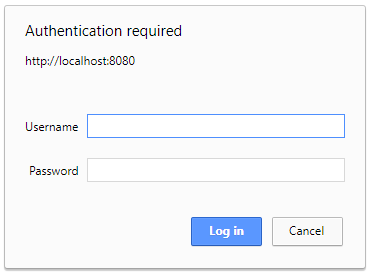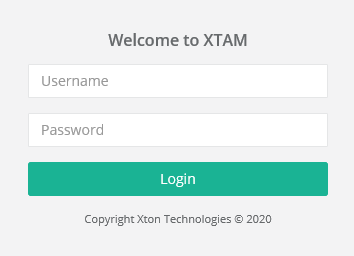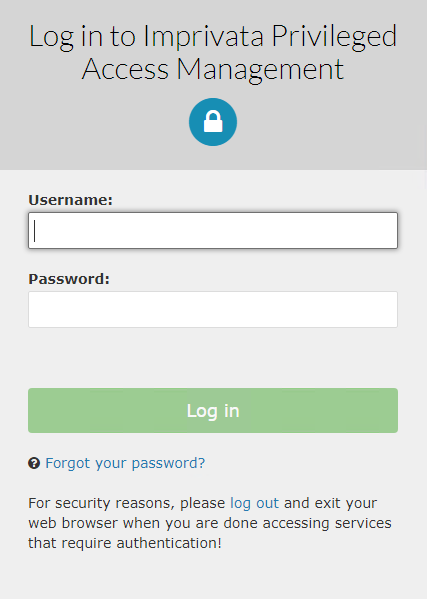REST API Shell Scripts
Getting Started Guide using REST APIs in Shell with Privileged Access Management.
This page outlines several specific scenarios in which REST APIs in PAM can be called using Shell scripts.
Please note that security is strictly enforced, so ensure the account executing the scripts has the appropriate permissions to access the objects in PAM.
In addition to this detailed guide you can also view the list of other functions you can call using REST API by navigating to Administration > Settings > Application Nodes > API Documentation.
Looking for REST API examples using other scripts? Click PowerShell examples, VBScript examples or Python examples for additional information.
The following scripts are provided as an example of what is possible, however they can and should be customized to meet your requirements including outside script integration, formatting and proper error handling.
Please note that our examples include use of curl for execution and jq for JSON parsing. Ensure these packages are deployed prior to executing the scripts or customize them to fit your needs.
- Create a Record
- Create a Folder
- Retrieve Root Folder
- List Folder Content
- Retrieve a Record
- Retrieve a Record with Password (Unlock)
- Retrieve a Record Field (Unlock)
- Update a Record
- Update One Record Field
- Download a File
- Share a Record or Folder
- Delete a Record
- Search for Objects (Record or Folder)
- List Record Types
- Database Export (Decrypted)
- Database Export (Encrypted)
- Database Import
- API Token
- Secure Authentication
Create a Record
Provides the ability to create a new record with the defined parameters.
folderId="183320" # ID of Parent Folder
typeId="1724" # ID of Record Type
recordName="Record Name" # Record Name (required)
recordDescription="Record Description" # Record Description (optional)
rhost="host.company.com" # Host URL
rport="22" # Host Port
ruser="user" # Host User
rpassword="myPassw0rd" # Host Password
rparameters={\"Host\":\"$rhost\",\"Port\":\"$rport\",\"User\":\"$ruser\",\"Password\":\"$rpassword\"}
curl -s $auth -H "Accept: application/json" -H "Content-Type:application/x-www-form-urlencoded" -H "X-XSRF-TOKEN: $apitoken" -X POST \
--data "name=$recordName&description=$recordDescription" --data-urlencode "custom=$rparameters" \
$url/rest/record/new/$folderId/$typeId
echo Done
Create a Folder
Provides the ability to create a new folder with the defined parameters.
folderId="183320" # ID of Parent Folder
folderName="Folder Name" # Folder Name (required)
folderDescription="Folder Description" # Folder Description (optional)
curl -s $auth -H "Accept: application/json" -H "Content-Type:application/json" -H "X-XSRF-TOKEN: $apitoken" -X POST \
--data "{\"name\":\"$folderName\",\"description\":\"$folderDescription\"}" $url/rest/folder/create/$folderId
echo Done
Retrieve Root Folder
Provides the ability to retrieve the Root Folder (All Records) and its parameters including ID.
rootFolder=$(curl -s $auth $url/rest/folder/root)
rootFolderId=$(echo $rootFolder | jq -r '.id')
#echo $rootFolder # Retrieve all Root Folder parameters
echo id:$rootFolderId # Retrieve Root Folder ID
echo Done
List Folder Content
Provides the ability to list all content of the specified folder.
folderId="183320" # Folder ID
allContent=$(curl -s $auth $url/rest/folder/list/$folderId)
allNamesOnly=$(echo $allContent | jq '.[] | .name, .id')
#echo $allContent # Get all Content parameters
echo $allNamesOnly # Get all Content "Names" and ID only
echo Done
Retrieve a Record
Provides the ability to retrieve the parameters of an existing record excluding the password.
recordId="168351" # Record ID
record=$(curl -s $auth $url/rest/record/get/$recordId)
recordname=$(echo $record | jq -r '.name')
check_status "Failed to unlock record"
recorduser=$(get_custom "$record" "User")
check_status "Failed to parse response"
echo $recordname: $recorduser
echo $record
echo Done
Retrieve a Record with Password Unlock
Provides the ability to retrieve the parameters of an existing record including the password.
recordId="168351" # Record ID
record=$(curl -s $auth $url/rest/record/unlock/$recordId)
recordname=$(echo $record | jq -r '.name')
check_status "Failed to unlock record"
recorduser=$(get_custom "$record" "User")
recordpassword=$(get_custom "$record" "Password")
check_status "Failed to parse response"
echo $recordname: $recorduser / $recordpassword
echo Done
Retrieve a Record Field Unlock
Provides the ability to retrieve a single parameter from a record’s field including the password.
recordId="168351" # Record ID
$field="Password" # The (internal) Name of the field
record=$(curl -s $auth $url/rest/record/unlock/$recordId/$field)
check_status "Failed to unlock record"
recorduser=$(get_custom "$record" "User")
recordpassword=$(get_custom "$record" "Password")
check_status "Failed to parse response"
echo $field: $record
echo Done
Update a Record
Provides the ability to update an existing record.
recordId="183323" # Record ID
recordName="Updated Name" # Updated Record Name
recordDescription="Updated Description" # Updated Record Description
rhost="host1.company.com" # Updated Host URL
rport="3389" # Updated Host Port
ruser="user1" # Updated Host User
rpassword="myPassw0rd1" # Updated Host Password
rparameters={\"Host\":\"$rhost\",\"Port\":\"$rport\",\"User\":\"$ruser\",\"Password\":\"$rpassword\"}
curl -s $auth -H "Accept: application/json" -H "Content-Type:application/x-www-form-urlencoded" -H "X-XSRF-TOKEN: $apitoken" -X PUT \
--data "name=$recordName&description=$recordDescription" \
--data-urlencode "custom=$rparameters" \
$url/rest/record/update/$recordId
echo Done
Update One Record Field
Provides the ability to update one record field.
curl -s $auth -H "Accept: application/json" -H "Content-Type: application/json" -H "X-XSRF-TOKEN: $apitoken" -X PUT --data "{\"string\":\"FIELD-VALUE\"}" $base/record/updateField/$recordID/$fieldNameDownload a File
Provides the ability to download a file (certificate, SSH key, secured file) associated to a record.
recordId="183323" # Record ID
fieldName="Cert" # Internal Name of Field that contains the file
curl -O -J $auth $url/rest/content/record/$recordId/$fieldName
echo Done
Share a Record or Folder
Provides the ability to share a record or folder with other users or groups.
shareUser="user" # Share object with User or Group Login
shareUserParam=$(curl -s $auth $url/rest/user/ensure/$shareUser)
shareUserId=$(echo $shareUserParam | jq -r '.id')
objectId="186460" # Record or Folder ID to Share
userId=$shareUserId
recordControl="View" # Permission Options: View / Unlock / Edit / Admin
sessionControl="None" # Permission Options: None / Recording / Connect
taskControl="None" # Permission Options: None / Execute / Review / Manage
curl -s $auth -H "X-XSRF-TOKEN: $apitoken" -X POST -d "" $url/rest/permissions/share/$objectId/$userId/$recordControl/$sessionControl/$taskControl
echo Done
Delete a Record
Provides the ability to delete an existing record.
recordId="186008" # ID of Record to Delete
folderId="183320" # Parent Folder ID
curl -s $auth -H "X-XSRF-TOKEN: $apitoken" -X DELETE $url/rest/record/delete/$folderId/$recordId
echo Done
Look up for Objects
Search for Objects Record or Folder.
Provides the ability to search for existing objects, like records or folders, using search query types.
A list of query types can be found here and will allow you to target specific objects like folders, ACLs or shadow accounts. For example, if you use the search term folder:Production, it will return all folders found using the term Production.
searchTerm="object name" # Value to Search
searchTerm=${searchTerm// /%20}
results=$(curl -s $auth -X GET $url/rest/record/find/View/$searchTerm)
searchResults=$(echo $results | jq '.[] | .name, .id')
echo Results:
echo $searchResults # Displays results as "Object Name" Object ID
#echo $results # Displays all parameters of Objects returned in results
echo Search Complete
List Record Types
Provides the ability to output a list of all currently available Record Types.
recordTypes=$(curl -s $auth -X GET $url/rest/recordtype/list)
recordTypeNamesId=$(echo $recordTypes | jq '.[] | .name, .id')
echo $recordTypeNamesId # Output as "Record Type Name" Record Type ID
echo Done
Database Export Decrypted
Provides the ability to output a list of all currently available Record Types.
curl -s $auth -H "X-XSRF-TOKEN: $apitoken" -X PUT $url/rest/application/export/false
echo Done
Database Export Encrypted
Provides the ability to output a list of all currently available Record Types.
curl -s $auth -H "X-XSRF-TOKEN: $apitoken" -X PUT $url/rest/application/export/true
echo Done
Database Import
Provides the ability to output a list of all currently available Record Types.
exportName="xtamexp-20180313152316-120" # Export file name
curl -s $auth -H "X-XSRF-TOKEN: $apitoken" -X PUT $url/rest/application/import/$exportName
echo Done
API Token
To provide protection against Cross-Site Request Forgery (CSRF) attacks each PAM API function that changes something in the system (mostly, POST, PUT and DELETE REST methods) requires an API Token passed using X-XSRF-TOKEN header.
To obtain a token, an PAM REST client has to request it from PAM server by calling /rest/user/whoami function that sets XSRF-TOKEN cookie with the value of the token.
Below is the example of Shell function that obtains the API token from PAM server by the server base URL and authentication string. See examples of using this token in the code samples above.
function api_token {
base=${1}
auth=${2}
whoami=$(curl -D whoami.tmp -s $auth $base/rest/user/whoami)
apitoken=$(cat whoami.tmp | grep "Set-Cookie" |cut -c 13- | cut -d "=" -f 2 | cut -d ";" -f 1)
rm whoami.tmp
echo $apitoken
}
API token enforcement could be disabled by defining parameter xtam.api.token.verification=false
Secure Authentication
PAM provides several methods for authenticating, first is a standard, non-federated username and password login, the second is a form-based login method, the third is a more robust federated login experience that supports multi-factor authentication and additional options and the fourth is using Authentication Tokens.
Depending on how your PAM installation is configured, the following authentication methods will be used.
Standard Authentication (non-federated)
If your login experience to PAM is a simple prompt like the one shown below, then you will use the following to authenticate using our REST APIs.

#!/bin/bash
cookies=$(mktemp)
curl_opts="-s"
function cleanup {
rm -f ${cookies}
}
trap cleanup EXIT
function check_exe() {
which "$1" >/dev/null 2>&1
if [ "$?" -ne 0 ]; then
(>&2 echo "Required executable [$1] not found. Please install it using system package manager.")
(>&2 echo "Exiting.")
exit 1
fi
}
function check_status() {
if [ $? != 0 ]; then
echo $1
exit 1
fi
}
function cas_auth {
base=${1}
cas_base=${2}
username=${3}
password=${4}
# get TGT ticket from Location header
tgt_location=$(curl ${curl_opts} -X POST -D - ${cas_base}/v1/tickets -d "username=${username}" -d "password=${password}" | grep "^Location" | cut -d":" -f 2- | tr -d \\r\\n)
if [ -z "${tgt_location}" ]; then
(>&2 echo "CAS authentication failed: unable to obtain TGT ticket")
exit 1
fi
# get service ticket from TGT
service_ticket=$(curl ${curl_opts} -X POST ${tgt_location} -d "service=${base}/")
if [ -z "${service_ticket}" ]; then
(>&2 echo "CAS authentication failed: unable to exchange TGT to service ticket")
exit 1
fi
# write session cookie to file
curl $curl_opts --cookie-jar ${cookies} $base/?ticket=$service_ticket
# print curl auth string to stdout
echo "--cookie ${cookies}"
}
function get_custom {
record=$1
field=$2
echo $record | jq -r ".custom | fromjson | .${field}"
}
check_exe curl
check_exe jq
url="https://pam.company.com/xtam" # PAM URL
user="admin" # PAM User
#password="myPassw0rd" # Optionally define your PAM User's Password
read -p "Enter $user password: " -s password # Prompt for PAM User's Password
echo
auth="-u $user:$password"
# Your code starts here
Form-Based Authentication
If your login experience to PAM is a form-based login page like the one shown below, then you will use the following to authenticate using our REST APIs.

url="https://pam.company.com/xtam" # PAM URL
user="admin" # PAM User
#password="myPassw0rd" # Optionally define your PAM User's Password
tc=$(mktemp)
cookies=$(mktemp)
curl -s -X GET -c ${tc} -D - ${base}/rest/user/whoami > /dev/null
curl -s -X POST -b ${tc} -c ${cookies} -D - ${base}/j_security_check -d "j_username=${username}" -d "j_password=${password}" > /dev/null
auth="-b ${cookies}"
# Your code starts here
Federated Authentication
If your login experience to PAM is a federated sign-in page like the one shown below, then you will use the following to authenticate using our REST APIs.

#!/bin/bash
cookies=$(mktemp)
curl_opts="-s"
function cleanup {
rm -f ${cookies}
}
trap cleanup EXIT
function check_exe() {
which "$1" >/dev/null 2>&1
if [ "$?" -ne 0 ]; then
(>&2 echo "Required executable [$1] not found. Please install it using system package manager.")
(>&2 echo "Exiting.")
exit 1
fi
}
function check_status() {
if [ $? != 0 ]; then
echo $1
exit 1
fi
}
function cas_auth {
base=${1}
cas_base=${2}
username=${3}
password=${4}
# get TGT ticket from Location header
tgt_location=$(curl ${curl_opts} -X POST -D - ${cas_base}/v1/tickets -d "username=${username}" -d "password=${password}" | grep "^Location" | cut -d":" -f 2- | tr -d \\r\\n)
if [ -z "${tgt_location}" ]; then
(>&2 echo "CAS authentication failed: unable to obtain TGT ticket")
exit 1
fi
# get service ticket from TGT
service_ticket=$(curl ${curl_opts} -X POST ${tgt_location} -d "service=${base}/")
if [ -z "${service_ticket}" ]; then
(>&2 echo "CAS authentication failed: unable to exchange TGT to service ticket")
exit 1
fi
# write session cookie to file
curl $curl_opts --cookie-jar ${cookies} $base/?ticket=$service_ticket
# print curl auth string to stdout
echo "--cookie ${cookies}"
}
function get_custom {
record=$1
field=$2
echo $record | jq -r ".custom | fromjson | .${field}"
}
check_exe curl
check_exe jq
url="https://pam.company.com/xtam" # PAM URL
cas_url="https://pam.company.com/cas" # PAM Signin Page URL
user="admin" # PAM User
#password="myPassw0rd" # Optionally define your PAM User's Password
read -p "Enter $user password: " -s password # Prompt for PAM User's Password
echo
auth=$(cas_auth $url $cas_url $user $password)
# Your code starts here
Token Authentication
If you are using Authentication Tokens, then you will use the following to authenticate using our REST APIs.
#!/bin/bash
cookies=$(mktemp)
curl_opts="-s"
function cleanup {
rm -f ${cookies}
}
trap cleanup EXIT
function check_exe() {
which "$1" >/dev/null 2>&1
if [ "$?" -ne 0 ]; then
(>&2 echo "Required executable [$1] not found. Please install it using system package manager.")
(>&2 echo "Exiting.")
exit 1
fi
}
function check_status() {
if [ $? != 0 ]; then
echo $1
exit 1
fi
}
function token_auth {
base=${1}
cas_base=${2}
token=${3}
# get service ticket from TGT
hdr=$(curl -si "${cas_base}/login?service=${base}/" -H "token:${token}" | grep "^Location")
service_ticket=$(echo ${hdr} | cut -d"=" -f 2- | tr -d \\r\\n)
if [ -z "${service_ticket}" ]; then
(>&2 echo "CAS authentication failed: unable to exchange token to service ticket")
exit 1
fi
# write session cookie to file
curl $curl_opts --cookie-jar ${cookies} $base/?ticket=$service_ticket
# print curl auth string to stdout
echo "--cookie ${cookies}"
}
function get_custom {
record=$1
field=$2
echo $record | jq -r ".custom | fromjson | .${field}"
}
check_exe curl
check_exe jq
url="https://pam.company.com/xtam" # PAM URL
cas_url="https://pam.company.com/cas" # PAM Signin Page URL
token="yourPAMtoken" # PAM Token
auth=$(token_auth $url $cas_url $token)
# Your code starts here